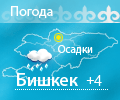Sights
Dungan Mosque
A tip-tilted triple roof, carved-layered eaves and wooden exterior pillars give this colourful 1910 mosque the look of a Mongolian Buddhist temple. Remarkably it survived the early Bolshevik era, which saw the town's other eight mosques destroyed, though it was closed for worship between 1933 and 1943. It's worth a quick photo stop if you're passing
Ala-Too Square
Surveyed by a triumphant statue of Manas, Bishkek's nominal centre is architecturally neo-brutalist in style, but it has a perversely photogenic quality especially when slowly goose-stepping soldiers change the guard beside the soaring national flagpole. That happens every two hours most of the year, hourly in winter. In summer, the concrete of the square's northern half is relieved by attractive floral displays and a musical fountain show
Bazaar in Bishkek
Osh Bazaar is one of Central Asia’s biggest markets dealing in everything from traditional hats and knives to seasonal fruit to horseshoes forged at the smithies in the bazaar. Many stalls are crafted from old container boxes and banal warehouse architecture but there's a fascinating bustle nonetheless, stretching for about 1km astride the river. Most dynamic on Sunday mornings, partly closed on Monday. Marshrutka signs 'bazaar' usually imply the eastern entrance, also known as JaymaBazaar .
Holy Trinity Cathedral
Set peacefully amid trees, this hefty wooden structure is topped with green roofed towers and almost-golden onion domes. The 1872 stone original was destroyed by an 1890 earthquake. Built on the same foundations a new wooden version, finished in 1895, was turned into a club by the Bolsheviks, who removed its five onion-domes in the 1930s. Serious reconstruction began in 1961, but church services only recommenced after 1991. Photos of its various incarnations are displayed in the entry hall. Women need to wear a headscarf to enter.
State historical museum in Bishkek
Thrillingly for Sovietophiles, this 1984 marble-faced cube still retains many splendidly stirring faux-bronze/copper reliefs and bold ceiling murals reflecting the building's former purpose as a state-of-the-art Lenin Museum. Mixed in are a series of photos and mementos from the 2010 revolution and portraits of that year's martyrs. The top floor yurt signals a completely disconnected section on ethnology and archaeology. Photos here show items from the museum's rich collection of Scythian gold but the originals are locked away in secured vaults and only shown to VIPs.
Prezhevalski historical complex
To overlook the Pristan area (though not the beach) it is worth stopping around 1km before the port and observing the scene from the shrine-like Prezhevalski memorial garden. Other than the minor curiosity of the view , the main attraction here is a small, well-presented museum dedicated to Nikolai Przewalski, the Russian explorer who died here in 1888 and for whom Karakol was once named. Entered through a neo-Greek portal, there's a giant map of his travels behind a big globe. Note the imaginative rendering of Senegal. Many photos, maps and mementos have English captions but there's no over-arching explanation of his life.
